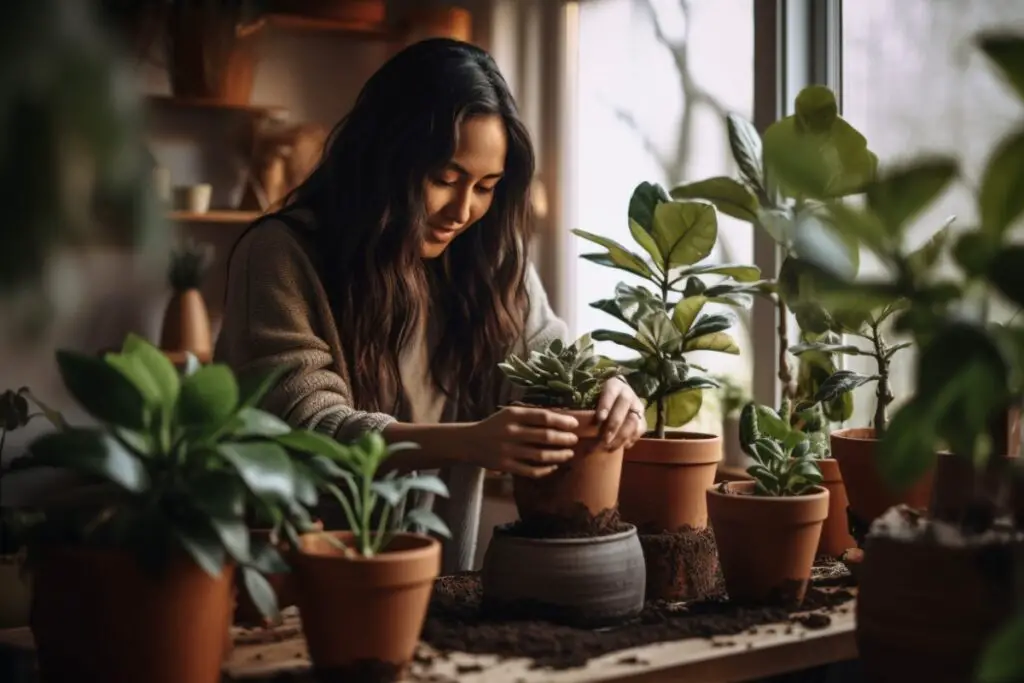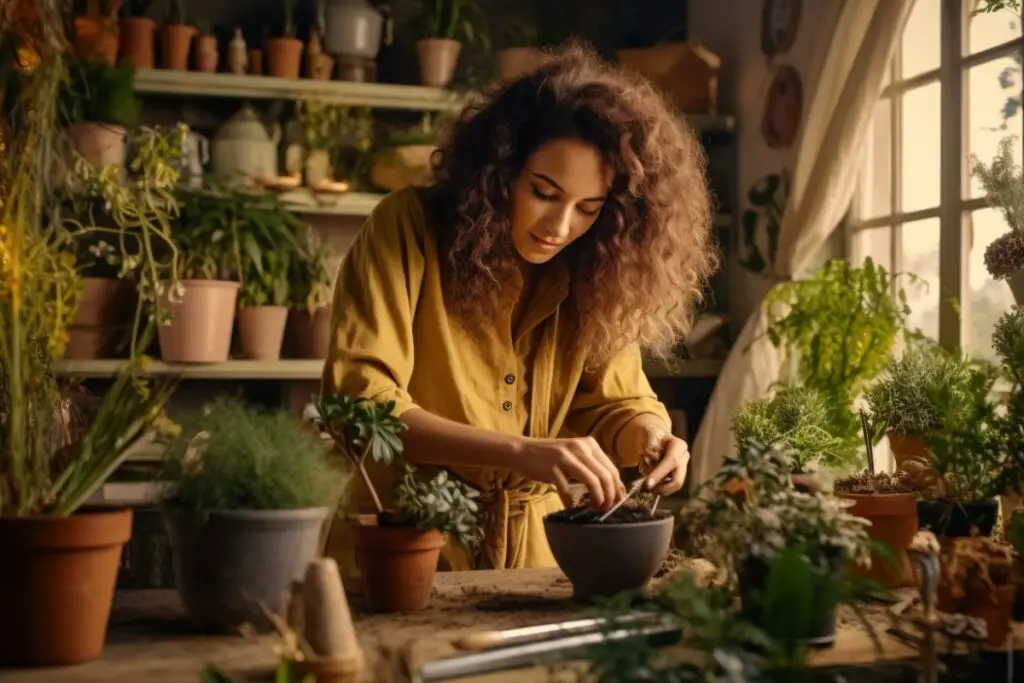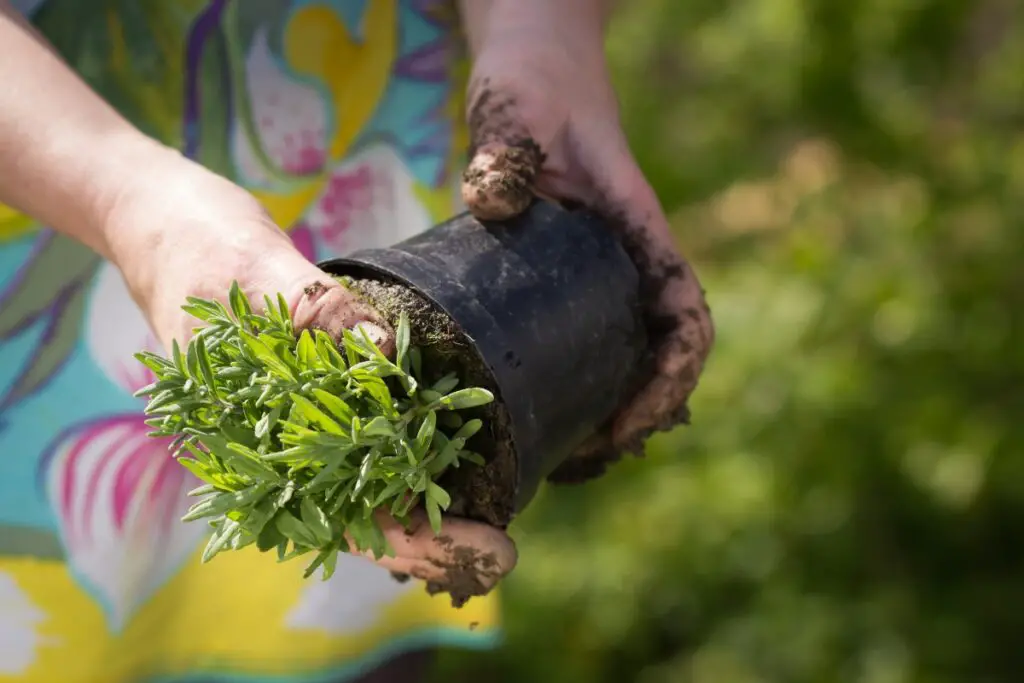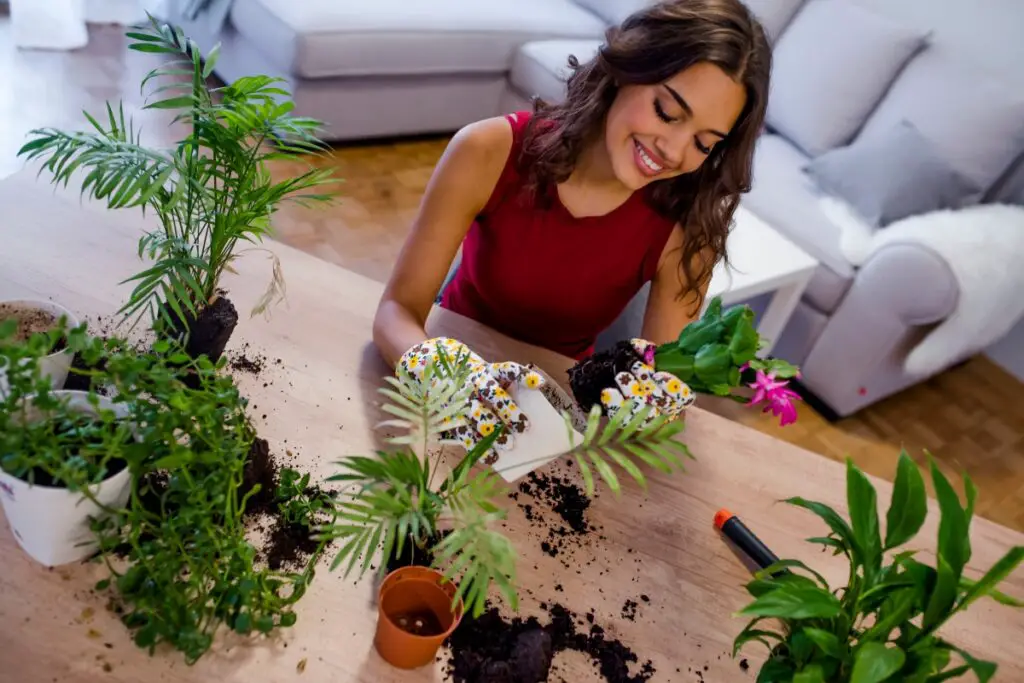Repotting is a critical aspect of indoor plant care that involves transferring plants from their current containers to larger ones, providing fresh potting mix and promoting healthy growth. In the United States alone, there are an estimated 139 million indoor plants, making proper care an essential practice for a significant number of households. With indoor plants proven to enhance air quality, reduce stress, and boost productivity, understanding the importance of repotting is crucial to maintaining their health and vitality.
In this comprehensive article, we will discuss the reasons behind the importance of repotting your indoor plants, how to recognize when it’s time to repot, the benefits of repotting, best practices to ensure successful repotting, potential risks and challenges, and how repotting contributes to a thriving indoor garden. By understanding these factors, you can create a vibrant and healthy indoor environment that brings a touch of nature into your living or working space.
Why is repotting your indoor plants essential?

Repotting is a crucial part of maintaining a healthy and thriving indoor plant collection. This section explores the role of repotting in plant growth and how it helps prevent root-bound conditions.
The role of repotting in plant growth
As plants grow, they require more space for their roots to expand and access essential nutrients. Repotting serves two primary purposes in supporting plant growth:
Promoting healthy root development
Repotting enables plants to develop a strong root system, which is essential for their overall health and stability. By providing additional space for roots to grow, plants can better absorb water and nutrients, leading to more vigorous growth.
Ensuring adequate nutrient supply
Over time, plants deplete the nutrients available in their potting mix. Repotting with fresh soil helps replenish these vital nutrients and ensures that your plants have access to everything they need to thrive.
Preventing root-bound conditions
Repotting is also essential to prevent root-bound conditions, which occur when a plant outgrows its current pot and its roots become tightly entwined or encircle the root ball.
Understanding root-bound plants
A root-bound plant is one whose roots have become so tightly packed that they can no longer grow or effectively absorb nutrients and water. This condition can lead to stunted growth, yellowing leaves, and eventually, plant death.
Consequences of not addressing root-bound plants
Ignoring root-bound plants can lead to various negative consequences, including reduced growth, susceptibility to disease, and even death. Repotting helps alleviate these issues by providing plants with the space they need to grow and develop a healthy root system.
How do you recognize when it’s time to repot your indoor plants?

Knowing when to repot your indoor plants is crucial for their well-being. In this section, we’ll discuss the signs that indicate it’s time to repot your plants and the importance of timing in the repotting process.
Signs that your plant needs repotting
There are several indicators that your plant may be ready for repotting:
- Stunted growth: If your plant’s growth seems to have slowed or stopped altogether, it may be due to a lack of space or nutrients in its current pot.
- Yellowing leaves: When a plant’s roots are unable to access the nutrients they need, the leaves may begin to yellow and drop off.
- Roots growing out of drainage holes: If you notice roots protruding from the drainage holes in your plant’s pot, it’s a clear sign that your plant has outgrown its current container and requires repotting.
The importance of timing in repotting
Repotting should be done at the right time to minimize stress on the plant and encourage successful transplantation.
Optimal seasons for repotting
Generally, the best time to repot indoor plants is during their active growing season, which typically occurs in the spring and summer months. This allows plants to quickly recover and continue growing in their new environment.
The relationship between repotting and plant life cycles
Understanding your plant’s life cycle is important when deciding when to repot. Some plants may need repotting more frequently, while others can remain in their current pots for longer periods. Familiarizing yourself with the specific needs of your plants will help ensure that you repot them at the most opportune time, contributing to their overall health and well-being.
What are the benefits of repotting your indoor plants?

Repotting offers a range of benefits that contribute to the overall health, appearance, and longevity of your indoor plants. In this section, we’ll discuss how repotting enhances plant health, improves aesthetics, and extends plant lifespan.
1. Enhancing overall plant health
Repotting plays a significant role in promoting plant health, as it helps prevent diseases and manage pests.
Disease prevention
Fresh potting mix reduces the risk of soil-borne diseases that may have built up in the old soil. By removing the plant from its current pot, you also have the opportunity to inspect and treat any root issues before they become severe.
Pest management
Repotting can help control pests by disrupting their life cycles and removing any eggs or larvae present in the old potting mix. Additionally, using new soil minimizes the chance of reinfestation, ensuring a healthier environment for your plant.
2. Improving plant aesthetics
Repotting contributes to the overall appearance of indoor plants by encouraging fuller foliage and enhancing flower production.
Encouraging fuller foliage
With more space for root growth and access to nutrients, repotted plants can produce new leaves and stems, resulting in a fuller, more vibrant appearance.
Enhancing flower production
For flowering plants, repotting can stimulate flower production by providing the necessary nutrients and growing space. This leads to a more visually appealing plant that adds beauty to your indoor space.
3. Extending plant lifespan
Repotting helps extend the lifespan of your indoor plants by facilitating long-term growth and creating a sustainable environment for them.
Facilitating long-term growth
By providing the necessary space and nutrients for growth, repotting allows your plants to continue developing and thriving over time.
Creating a sustainable environment for plants
Repotting helps maintain a balanced ecosystem within the pot, ensuring that plants have access to the resources they need to survive and thrive for years to come.
How can you ensure the success of your repotting efforts?

To make the most of your repotting efforts, it’s essential to minimize stress during the process and address any signs of transplant shock. Here are some tips for reducing stress during repotting and recognizing and addressing transplant shock.
Tips for minimizing stress during repotting
- Watering the plant before repotting: Ensure your plant is well-hydrated before repotting, as this will help reduce stress and make it easier to remove from its current pot.
- Providing ample time for plants to acclimate: Give your plants some time to adjust to their new pot and environment before resuming their regular care routine, such as watering and fertilizing.
Recognizing the signs of transplant shock and addressing them
Transplant shock can occur when a plant experiences stress during the repotting process. Symptoms of transplant shock include wilting, yellowing leaves, and slowed growth. To help plants recover, follow these techniques:
- Water appropriately: Ensure the newly repotted plant receives adequate water, but avoid overwatering, which can lead to root rot.
- Provide proper lighting: Place the plant in an area with appropriate lighting to encourage recovery and new growth.
Are there any potential risks or challenges associated with repotting?
Repotting is generally beneficial for indoor plants, but it’s essential to be aware of potential risks and challenges. In this section, we’ll discuss common repotting mistakes and how to avoid them, as well as dealing with stress and shock in repotted plants.
Common repotting mistakes and how to avoid them
- Repotting too frequently or infrequently: Each plant has unique repotting needs, and repotting too often or not often enough can cause stress or limit growth. Research your plant’s specific needs to determine the ideal repotting schedule.
- Using an inappropriate pot or potting mix: Choosing the right pot and potting mix for your plant is crucial. Consider factors such as size, drainage, and material for the pot, and select a potting mix tailored to your plant’s needs.
Dealing with potential stress and shock in repotted plants
Repotting can be a stressful experience for plants, and it’s essential to recognize the causes of stress and implement strategies to minimize it.
Understanding the causes of stress during repotting
Stress during repotting can result from factors such as root disturbance, changes in the growing environment, and damage to the plant.
Strategies to minimize stress and facilitate recovery
To reduce stress during repotting and help your plants recover, consider the following:
- Handle plants gently to avoid damaging their roots and leaves.
- Ensure the new pot has appropriate drainage to prevent overwatering.
- Gradually acclimate your plant to any changes in lighting or temperature in its new location.
How does repotting contribute to a thriving indoor garden?

Repotting is a vital aspect of a holistic plant care routine that complements other care practices and fosters a healthy indoor ecosystem. In this section, we’ll discuss the role of repotting in plant care and its impact on the overall aesthetics and atmosphere of indoor spaces.
The role of repotting in a holistic plant care routine
Repotting complements other care practices such as watering and fertilizing, ensuring that your plants receive the necessary resources to grow and remain healthy. By incorporating repotting into your plant care routine, you create an environment where your indoor plants can thrive.
The impact of repotting on the overall aesthetics and atmosphere of indoor spaces
A well-maintained indoor garden can transform the atmosphere of your living or working space. Repotting contributes to this by promoting healthy, vibrant plants that provide visual interest and improve air quality. This creates an inviting and calming environment that supports mental well-being and fosters a connection with nature.
Conclusion
Repotting is an essential aspect of indoor plant care that contributes significantly to the health, appearance, and longevity of your plants. By understanding the importance of repotting and following best practices, you can create a thriving indoor garden that enhances the atmosphere of your living or working space. Embrace proper repotting techniques to ensure your plants’ optimal health and enjoy the many benefits they bring to your indoor environment.
